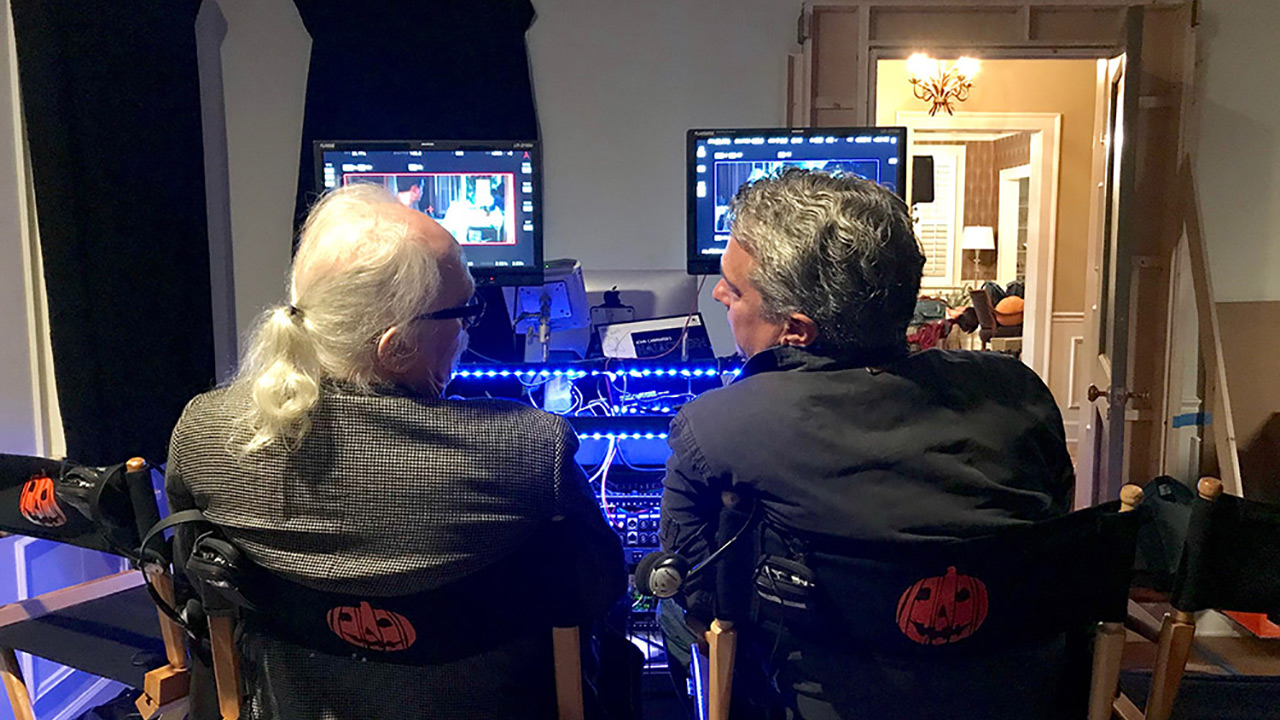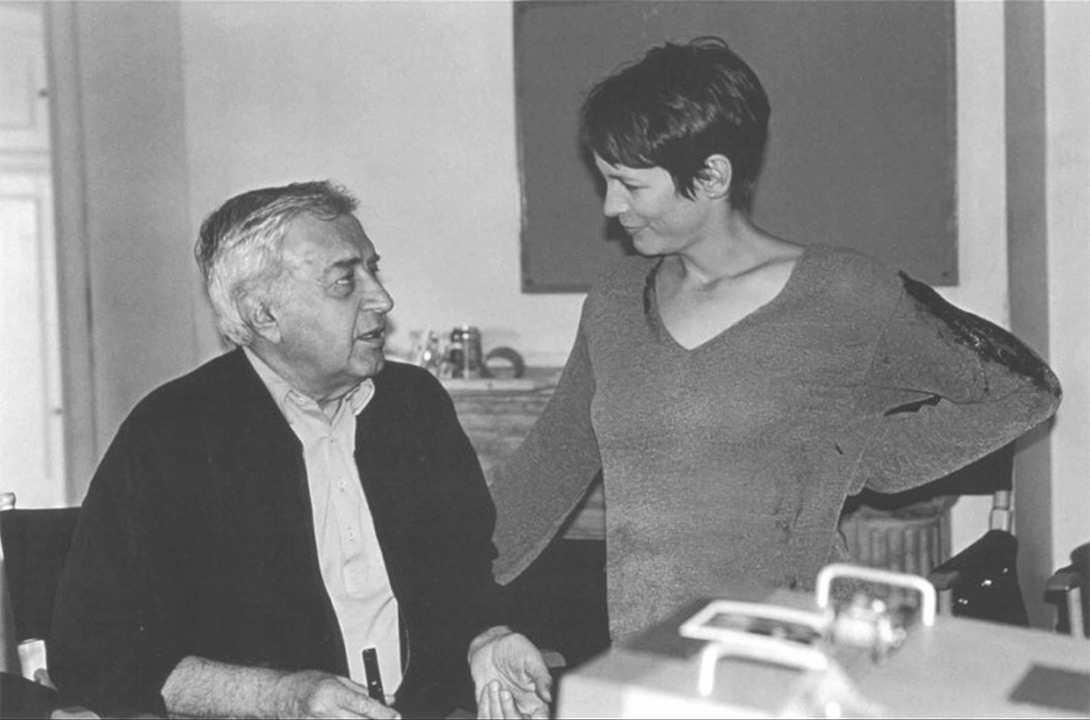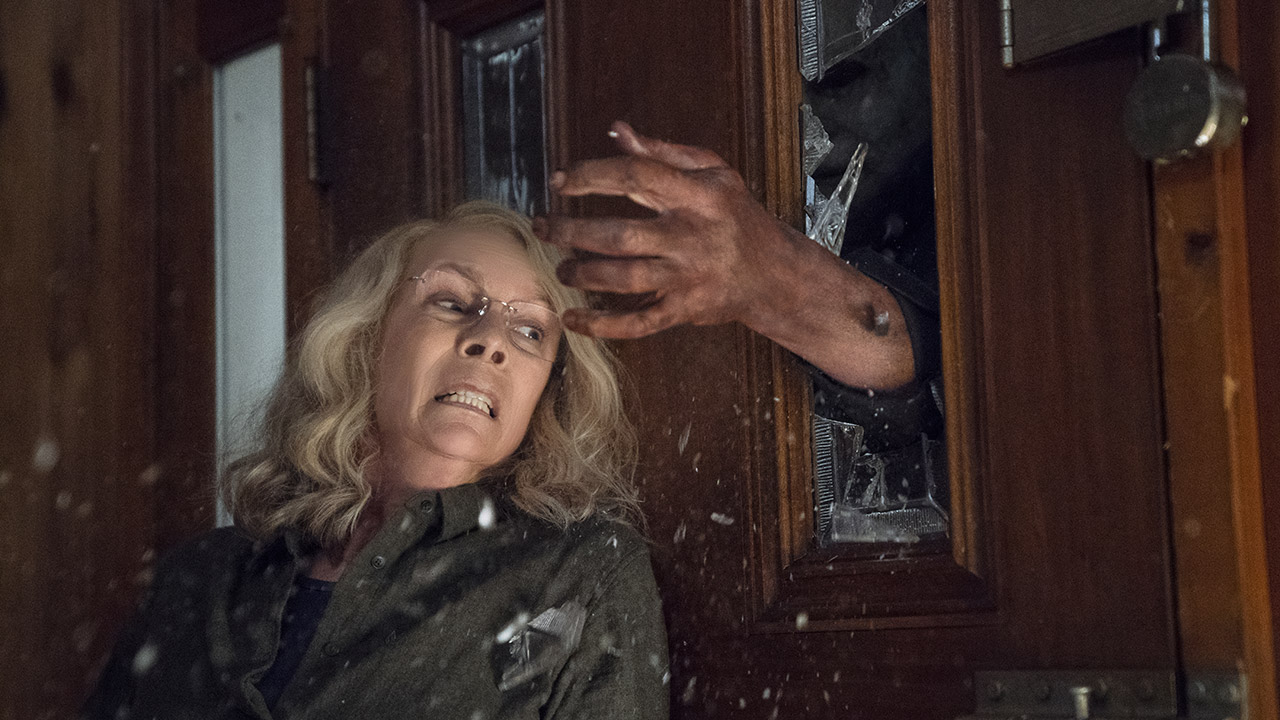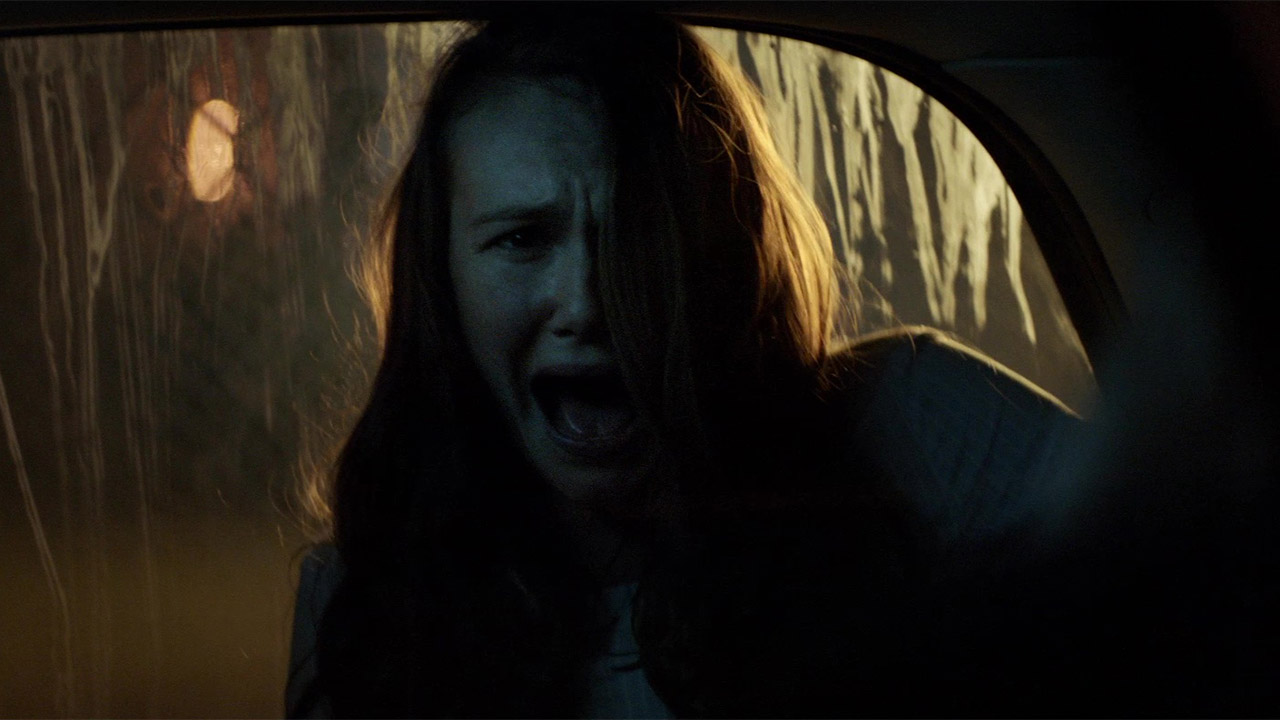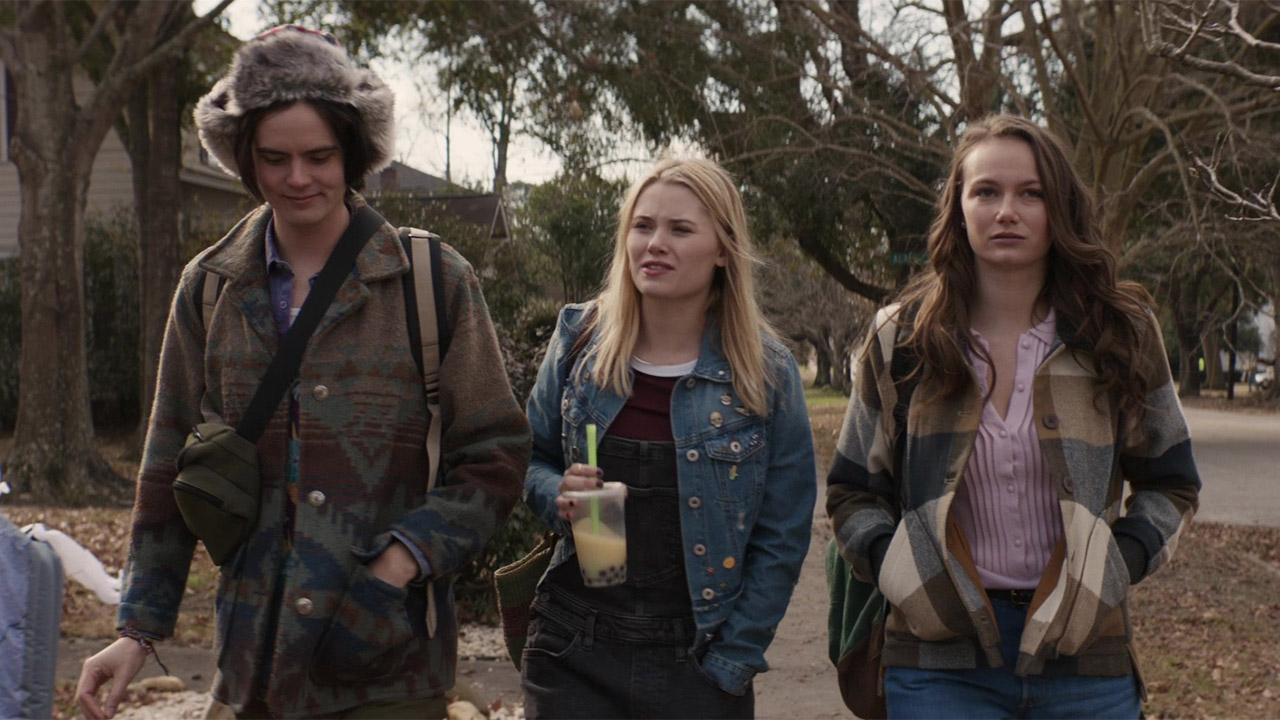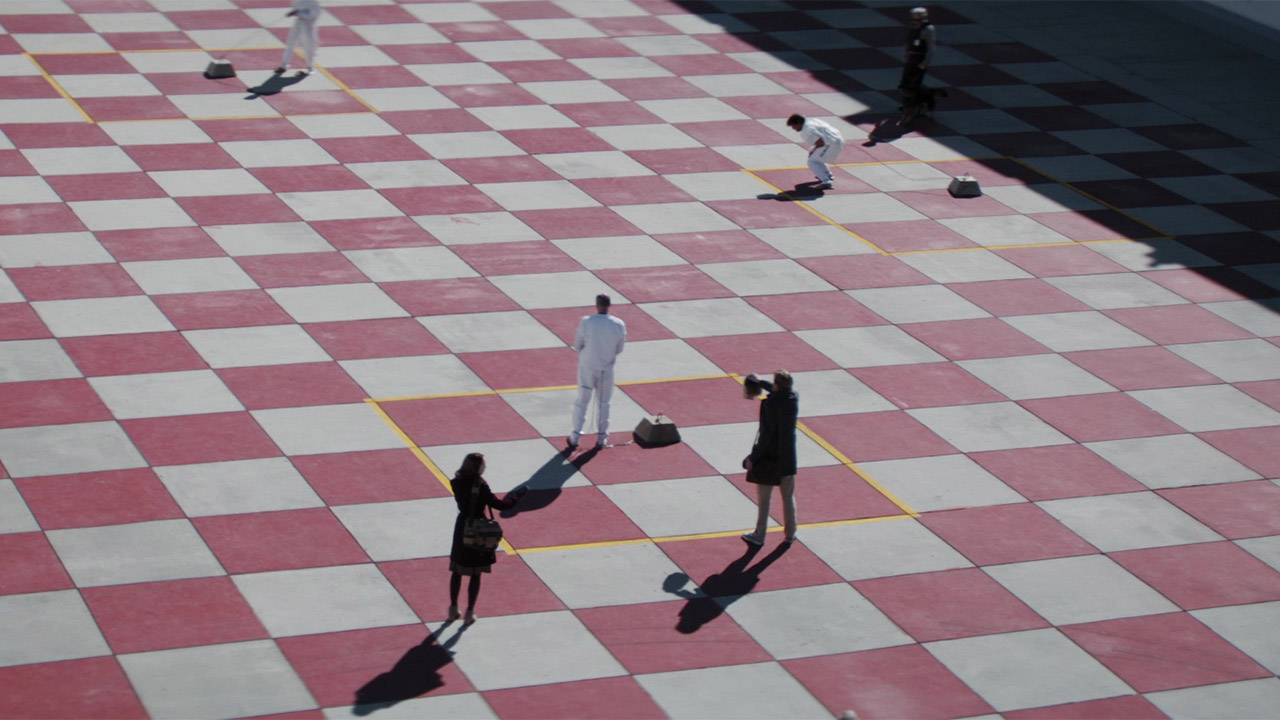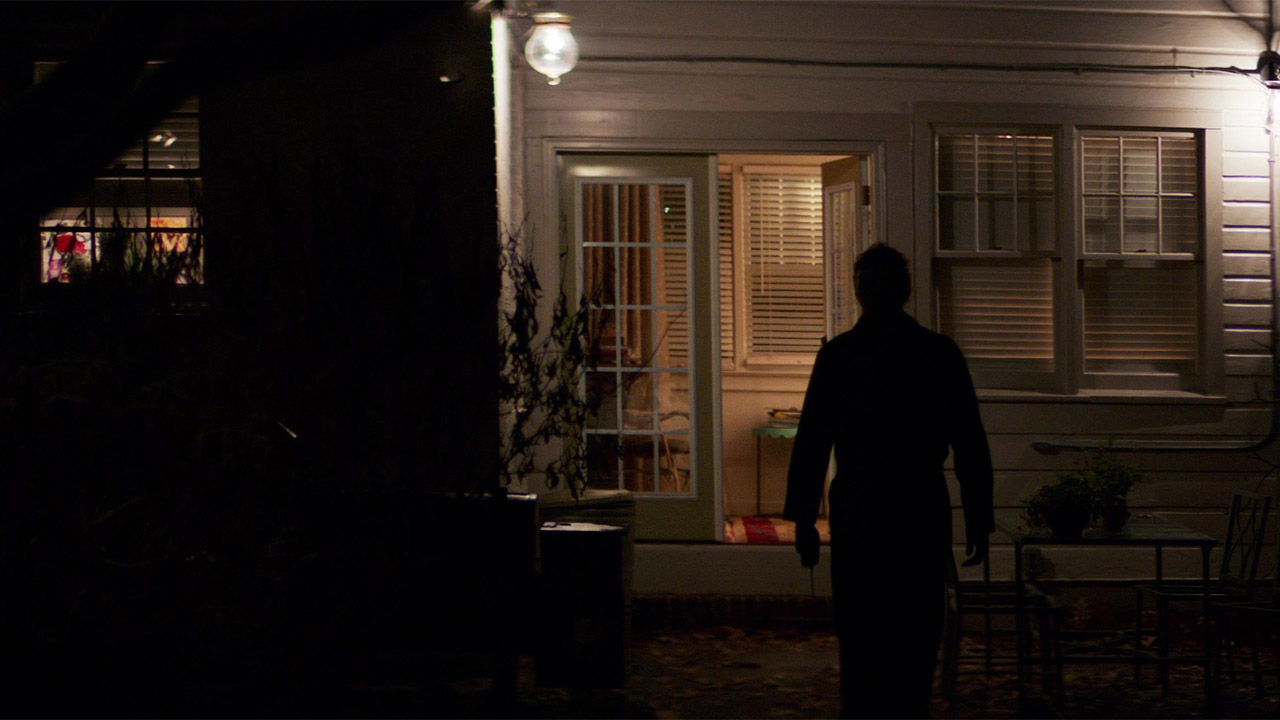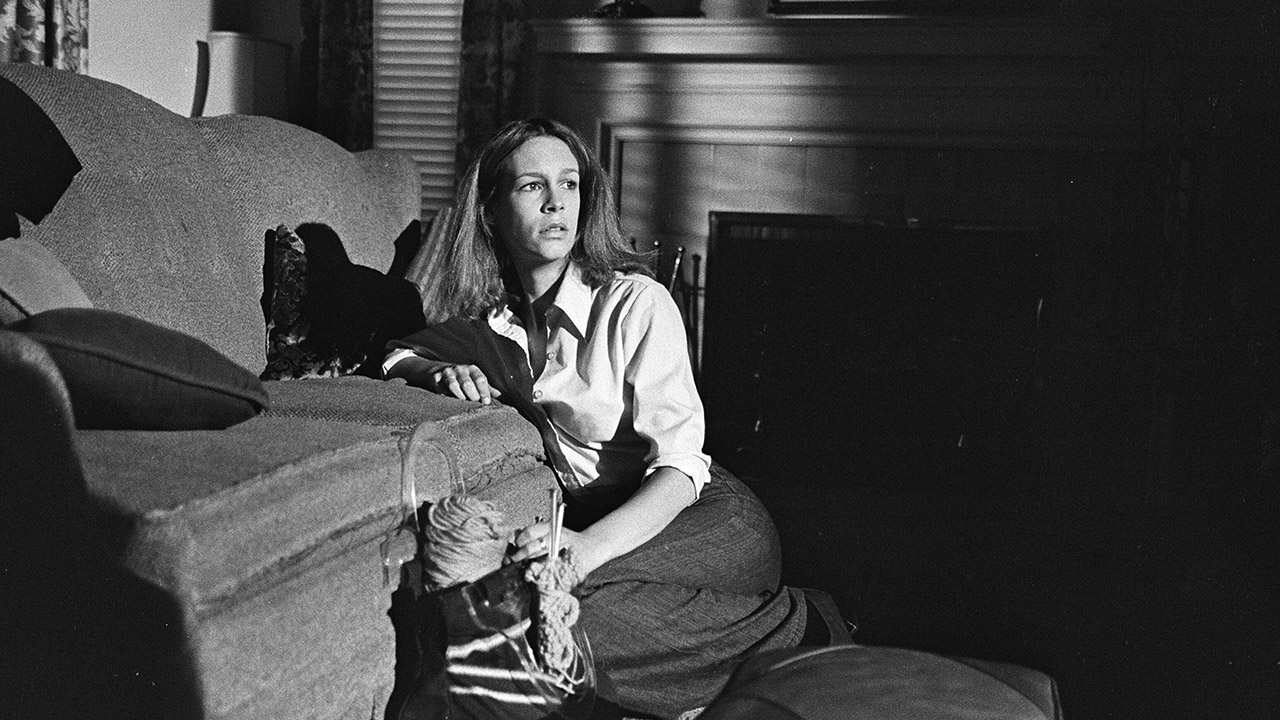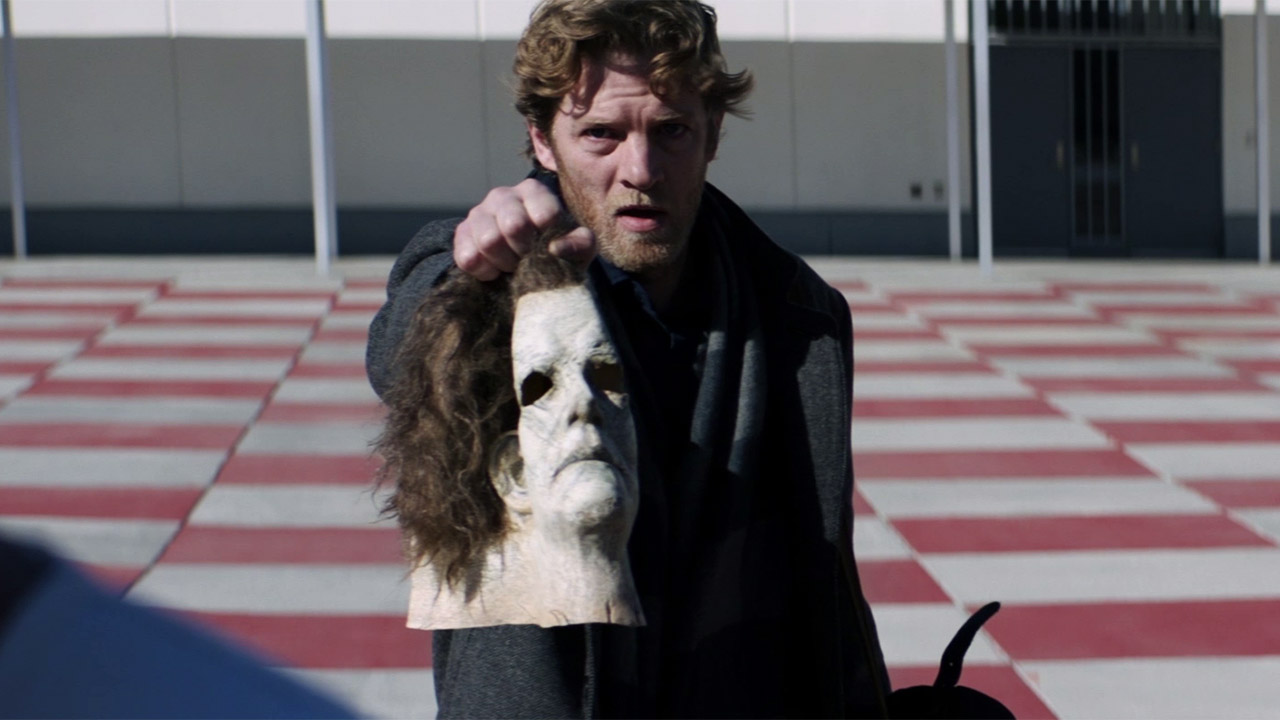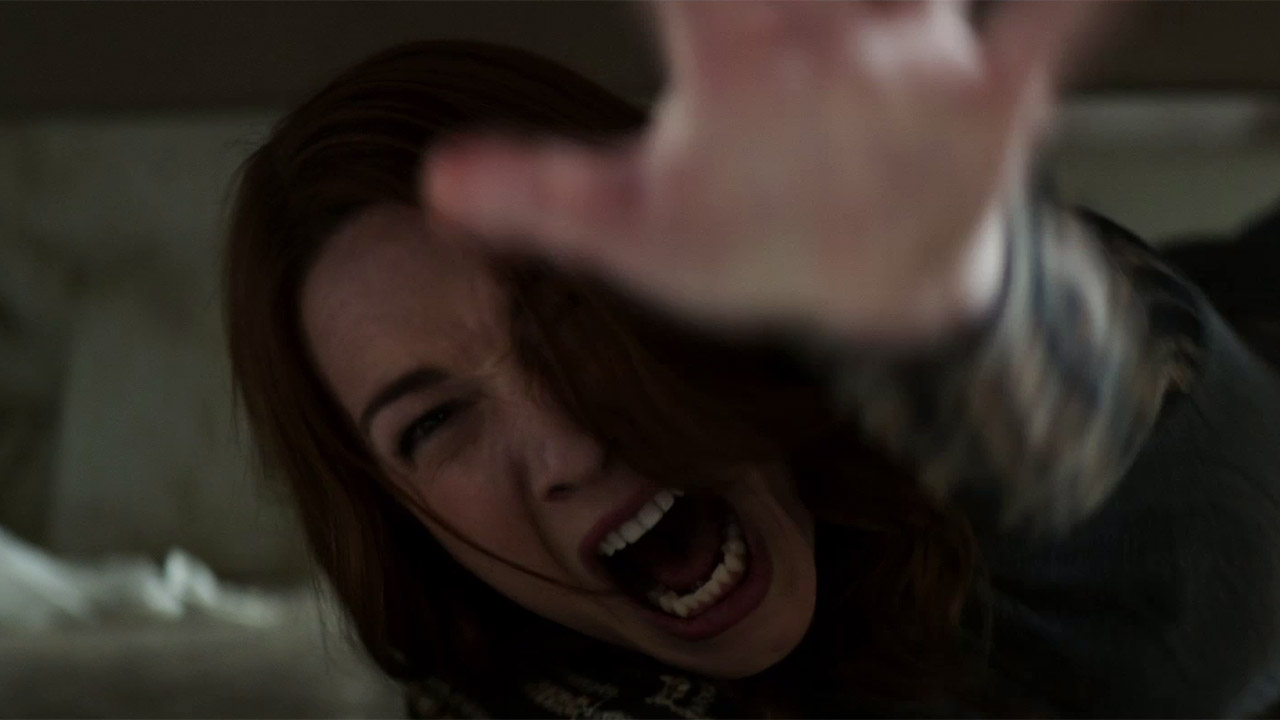From his debut turn as a teenaged murderer in Tim Hunter’s 1986 cult drama River’s Edge to his role of “Arnold Walker” in the television sci-fi series “The Man in the High Castle,” prolific actor Dan Roebuck has over the span of his thirty-five year career demonstrated an impressive diversity working within multiple genres. But with over two hundred roles under his belt, the often-maligned category of horror remains to this day his personal favorite.
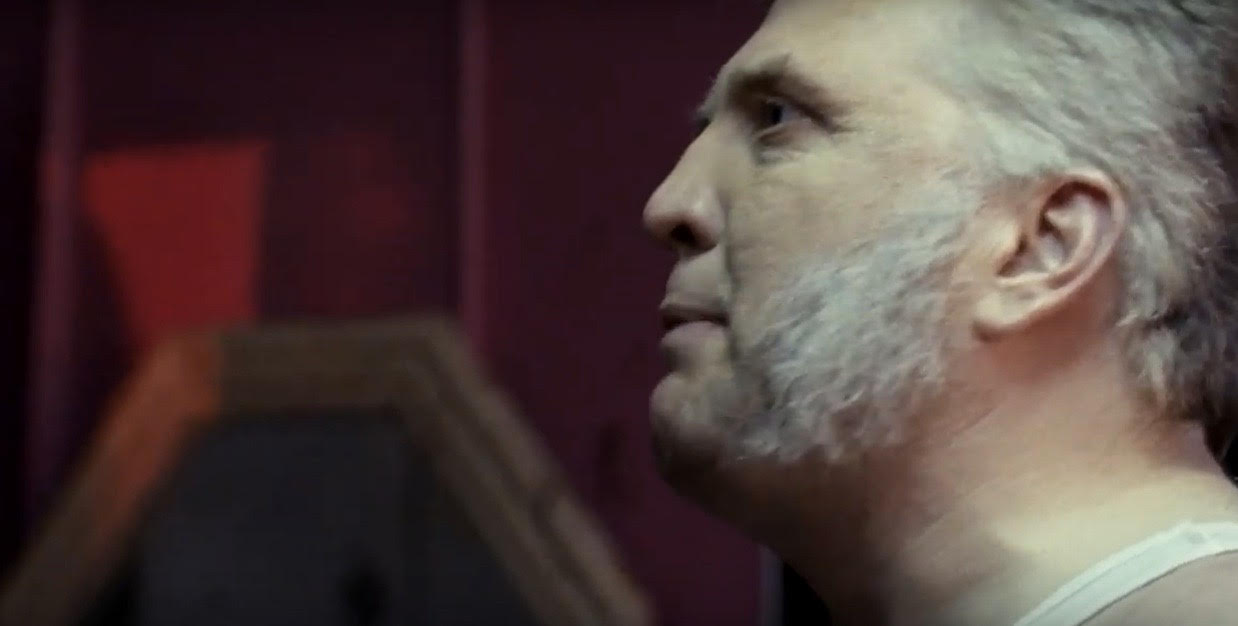
Dan Roebuck in Rob Zombie’s Halloween II
A monster fan from an early age and a lifetime collector of genre ephemera (his assemblage of oddities range from life-sized Frankenstein props and Famous Monsters of Filmland magazines to vintage 70s wax museum pennant banners and Don Post Studios masks, and most everything in between), Roebuck would also go on to further explore his love of horror through the arts via several genre roles, including but not limited to turns in Final Destination (2000), Bubba Ho-Tep (2002) and Larry Blamire’s 2009 cult indie The Lost Skeleton Returns Again (among others), as well as his own creation of his horror persona “Dr. Shocker,” host of Dr. Shocker’s Vault of Horror.
It’s his appearance though as “Lou Martini” in both Rob Zombie’s Halloween and Halloween II which genre fans may most recognize him for, and of which we dug into recently while chatting with the affable actor and filmmaker in his Los Angeles home cum-museum.
“For (2007’s) Halloween, I auditioned,” recalled Roebuck, who at the time had already worked with filmmaker Zombie on The Devil’s Rejects in 2005 (in which he appears as “Morris Green,” a role he’d reprise some years later in 2019’s 3 From Hell). “I’m not precious when it comes to that. Even though I had worked for Rob before I had to prove myself again. This is what I do. I’m an actor, so I don’t mind.”
Of the audition Roebuck remembers, “I actually was coming from a read for something else, and I had glued on a moustache and a beard, because the character I was reading for (in Halloween) was Chester Chesterfield, this groundskeeper that Michael Myers kills at a cemetery.”
“That role ended up going to Sid Haig,” continued Roebuck, “so I didn’t get that part, but Rob said, ‘Do you want to play the part of the strip club owner instead?’ So, that’s how I was cast in Halloween. And I remember I acted opposite Gary Grossman, who was the nerdy guy in (the 1984 film) Bachelor Party, and I was so excited, because I love that film. Gary was the other guy at the bar, and we shot a day or two.”

(left-to-right) Dan Roebuck & Gary Grossman in a scene deleted from Rob Zombie’s Halloween
Reminiscing on principal photography of Halloween, Roebuck offered, “It was in Valencia, California, at The Rabbit in Red set which they had built there. And while there is a shot of me in the movie, one brief glimpse, I think it turned out to my benefit that I got cut out of the film. Because of that, there was no definitive end to my character, which allowed Lou to come back in Halloween II. And that was more of a meal certainly than the role as it was written in the first film. In the first one I had one or two scenes, one of which was a nice one with Sheri (Moon Zombie). But the second film, the role was a much larger one, and it had a great death scene for my character, which we ended up shooting twice, because the first time we shot it, when Michael killed me, he wasn’t wearing the mask.”
As for Roebuck’s return in Halloween II, the actor recalled, “Because I had been in Halloween, it was assumed I suppose that I would be in Halloween II if the character were to return. So, three or four weeks before they were to shoot Halloween II, Rob calls me up and says, ‘Dan, we were just thinking, this guy in the script who’s this Frankenstein guy, I thought maybe it should be Lou Martini. What are you doing this weekend?’ I said, ‘I’ll be wherever you need me to be, Mr. Zombie.’ So, I flew right to Atlanta (Georgia) to the film’s production offices.”
With over two decades having passed in narrative since the introduction of his character in Rob Zombie’s Halloween, the character of Martini was not only required to look older in Zombie’s follow-up, but also at times to sport the previously mentioned Frankenstein’s Monster getup as the script necessitated.

(left-to-right) Dan Roebuck & Wayne Toth (Photo Copyright: Dan Roebuck)
“So, it was (makeup department head) Douglas Noe who handled the age makeup and the sideburns, and (special effects makeup designer) Wayne Toth who created the second Frankenstein look,” remembered Roebuck. “So, I went down there, and I was like a kid in a candy store! Wayne is a great makeup man, and on top of that I had friends in the Atlanta area, fellow monster collectors, and they got to come to set and to meet Rob, while the makeup department established the looks.” (Writer’s note: additional never-before-seen photos at the end of this article).
“And I’ll tell you what my favorite part of it was,” expounded Roebuck. “I was in the wardrobe trailer waiting on something, the pants I was going to wear or whatever, and there were some Don Post masks in there. I said, ‘Oh, are you using these in the film?’ And they said, ‘No, we can’t get permission (from Don Post Studios) to use them.’ So, I called Don Post Jr., and he answered the phone, and I said to him, ‘Don, I’m on the set of this new Halloween movie that Rob Zombie’s doing, and do you know this mask? And this mask? Can they use them in the movie? And Don said, ‘Yeah.’ So, I said to production, ‘OK, you now have permission to use these masks in the film!’ So somewhere in the background of Halloween II are those Don Post masks! What are the odds?”
As for Roebuck’s death scene as originally shot in Halloween II, the actor stated, “The first time, you know, it wasn’t much of a death. Tyler kind of just threw me into a locker, and that was that. He had already stomped Jeff Daniel Phillips, and I don’t remember what he did to Sylvia Jefferies’ character. But the deaths were much quicker. And then, when we went to re-shoot with Tyler wearing the mask, we shot all that totally inappropriate stuff. You know, the, ‘You want to bang Frankenstein’s monster?’ stuff.”
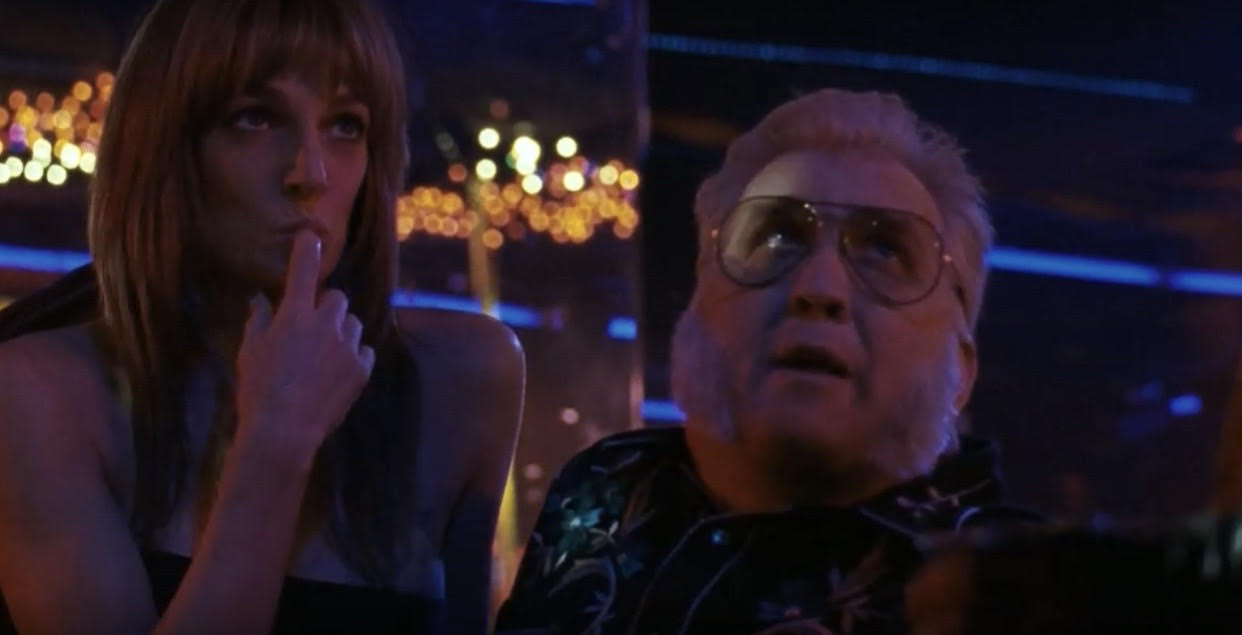
(left-to-right) Sylvia Jefferies & Dan Roebuck in Rob Zombie’s Halloween II
Of that, Roebuck recalled, “So, my wife called during filming and asked, ‘How’s it going? What are you up to?’ And I said, ‘Oh, it’s a hard day, you know, I’m up here with this naked actress.’ My wife said, ‘What? She’s naked? How naked?’ And I said, ‘Well, naked.’ You know, you can’t for the life of you convince someone who you’re married to that spending a day with a gorgeous naked lady is work. So, don’t even try.”
Regarding his death scene redux, “I’m sure that I have brain damage from it, to this day,” he laughed. “When we were shooting the scene in the (strip club’s) hall, and I’m trying to think of how the shots are configured, but I think I was running away from (Michael Myers actor) Tyler Mane, and the camera was behind him and he yelled, ‘Dan!’ And I turned around to see that he was running at me in huge steps, and he probably covered thirty-five feet of hallway in just five of them, and I was like, ‘Ahhh!’ Because he was Michael Myers, and I hadn’t seen him in the mask up until that point. And that was quite simply total immersion: the immersion of your child self into your adult self, and from the kid to the artist. None of that was lost on me. From the boy who was inspired by movie monsters to act and to create to the adult who later was working with movie monsters, it was full circle. It was a gift.”
As for Roebuck’s personal relationship with the 6’ 8” Mane, “He’s just quite simply a really nice man. You know, my daughter has always called him ‘Buttercup,’ because as a little kid she gave all of my friends nicknames. So, she told him, ‘I’m going to call you Buttercup.’ And he just smiled and said, ‘OK.’”
For more, check out part 1 of our interview with Roebuck here, and for those interested in Roebuck’s latest endeavors, you can visit achannelofpeace.org for more.

(left-to-right) Gary Grossman, Dan Roebuck, Ken Foree & Rob Zombie (Photo Copyright: Dan Roebuck)
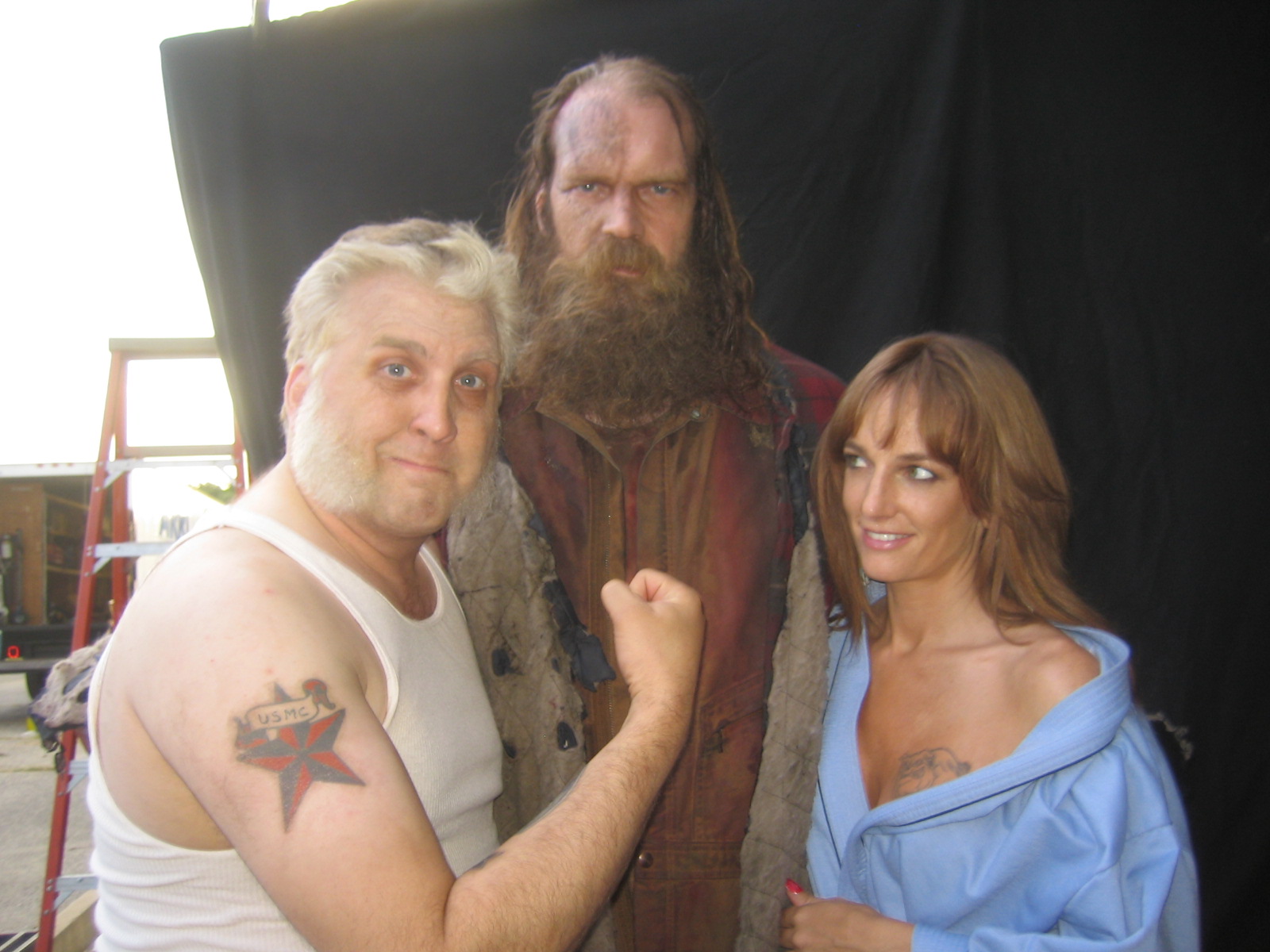
(left-to-right) Dan Roebuck, Tyler Mane & Sylvia Jefferies (Photo Copyright: Dan Roebuck)

(left-to-right) Douglas Noe & Dan Roebuck (Photo Credit: Dan Roebuck)
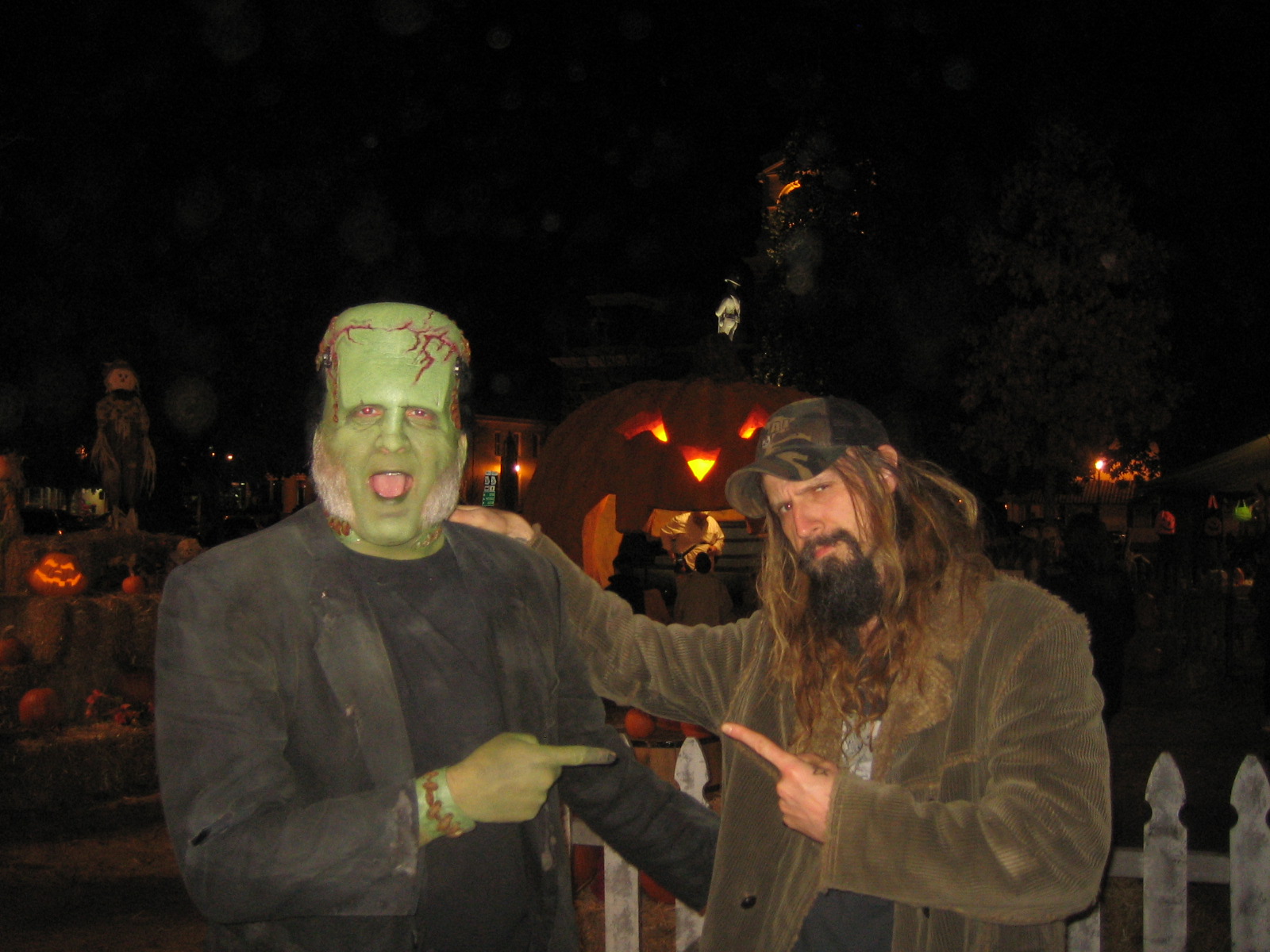
(left-to-right) Dan Roebuck & Rob Zombie (Photo Credit: Dan Roebuck)
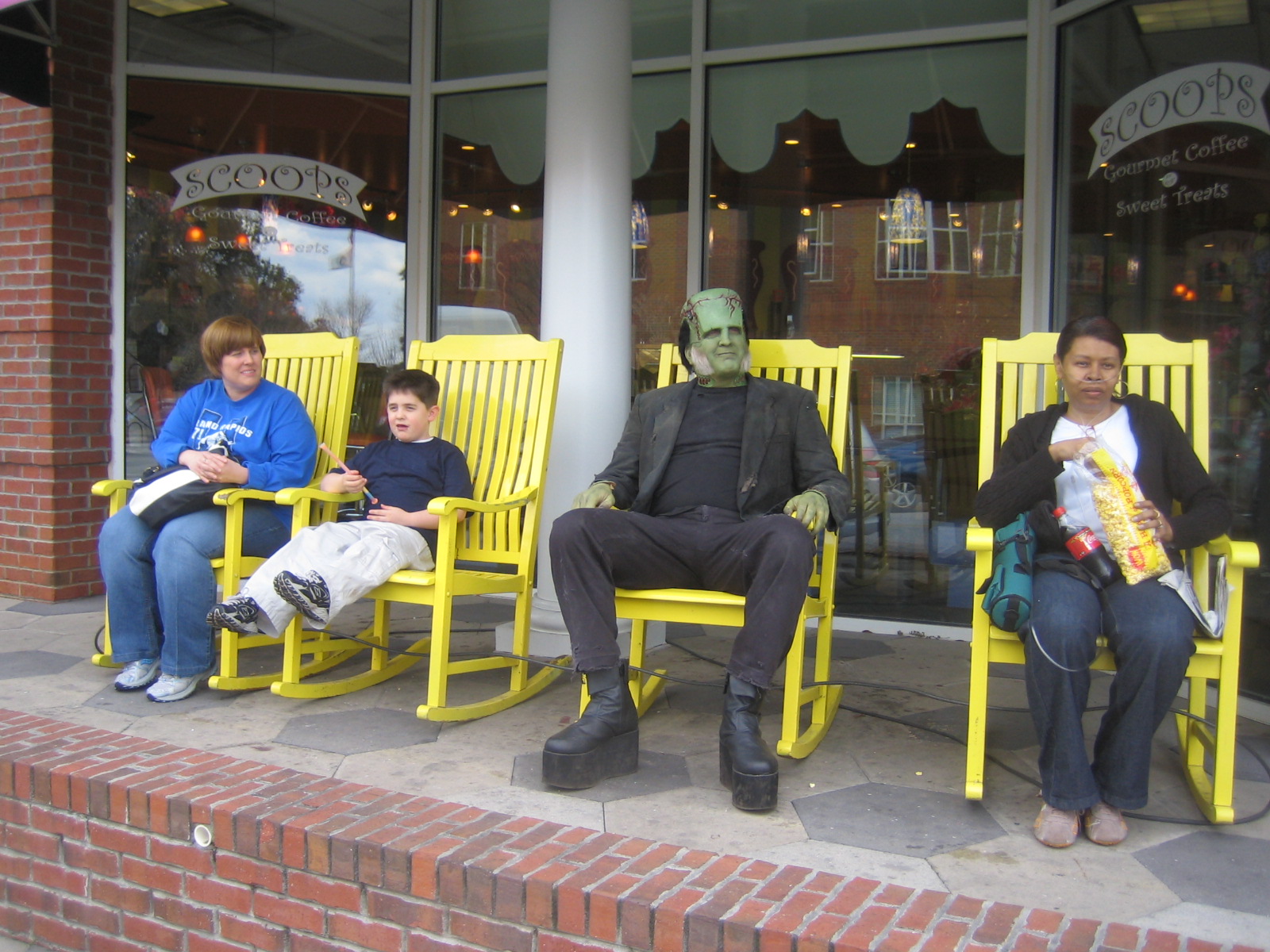
Between takes on the set of Rob Zombie’s Halloween II (Photo Copyright: Dan Roebuck)


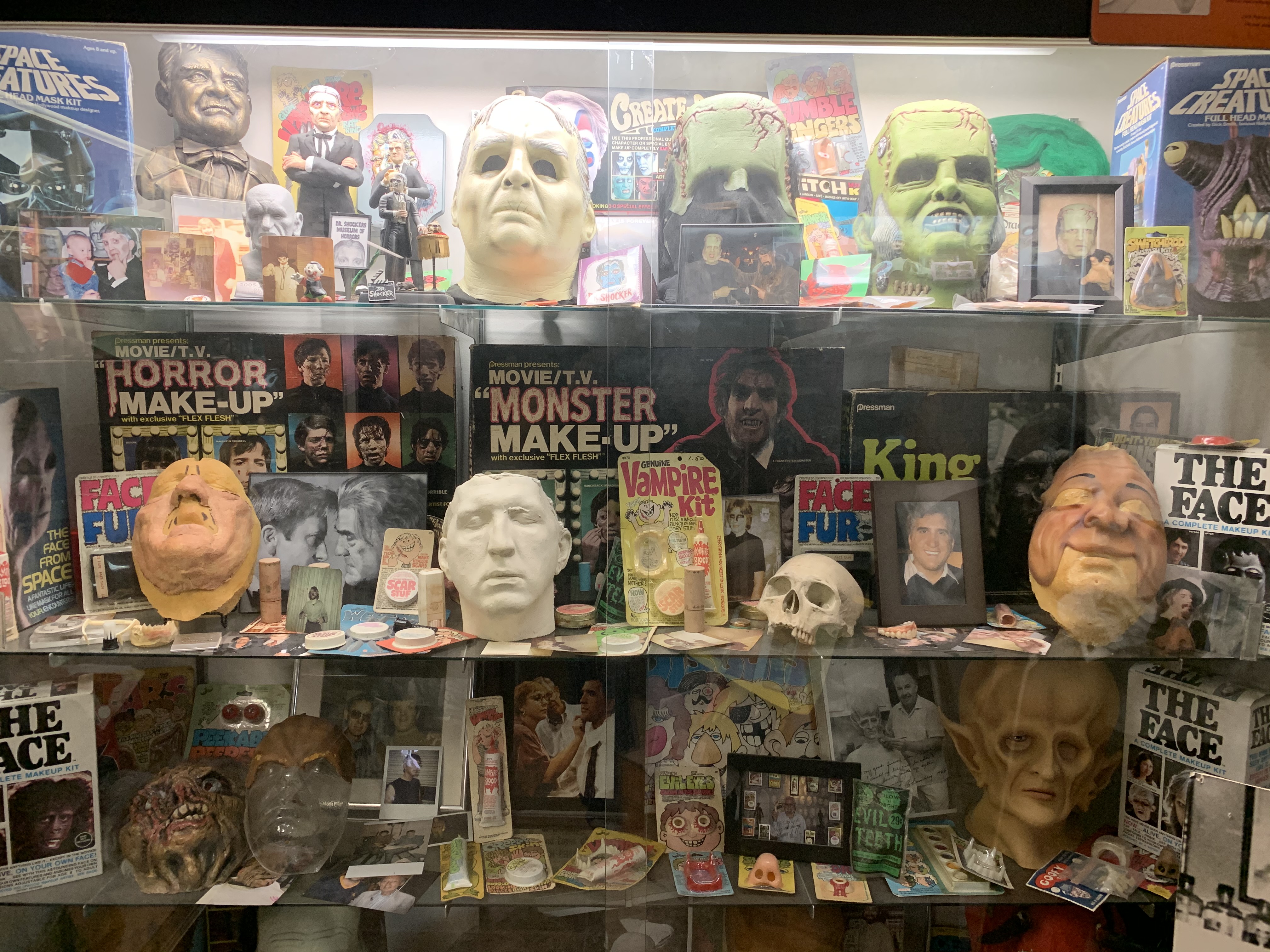
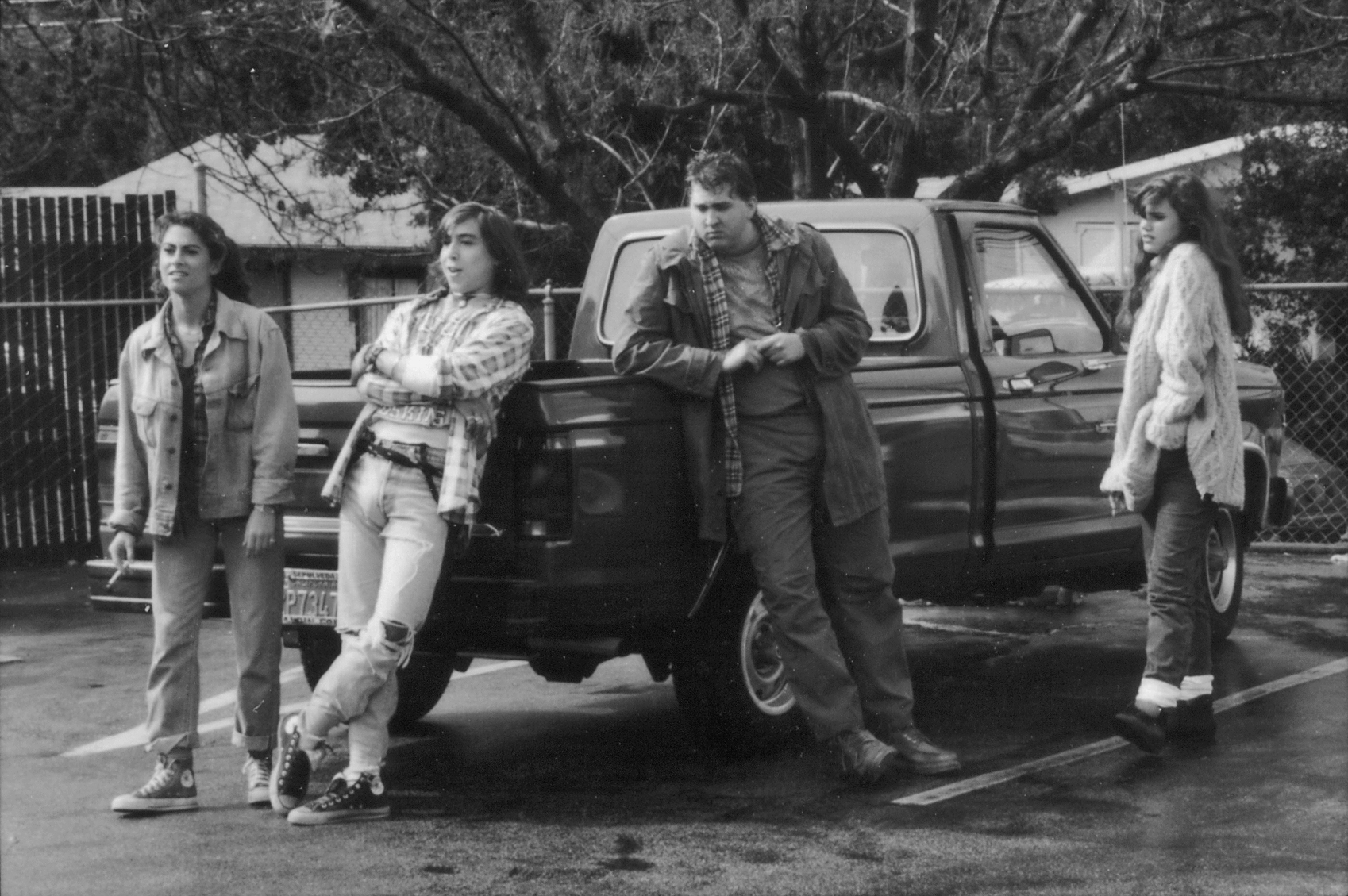
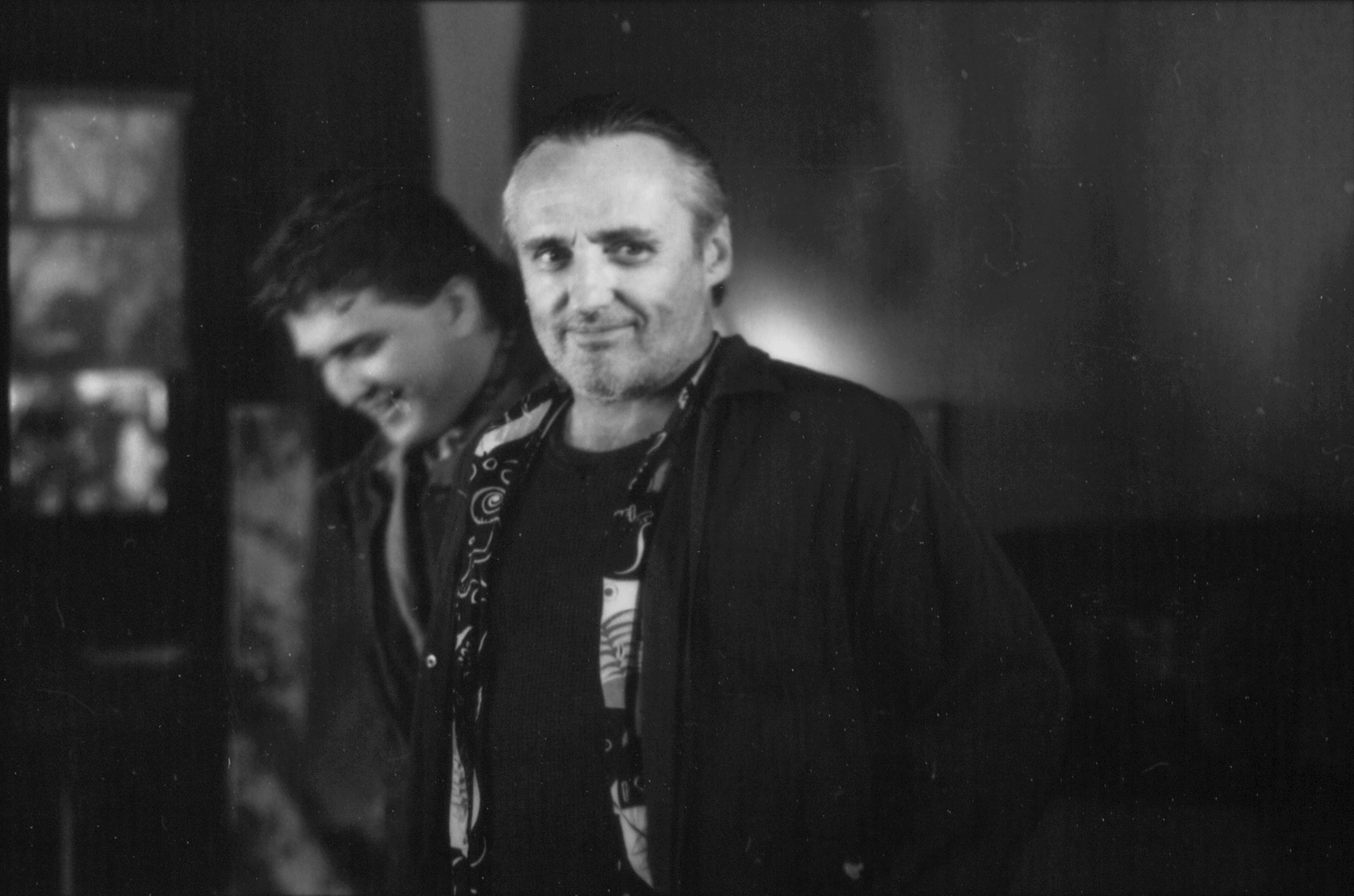
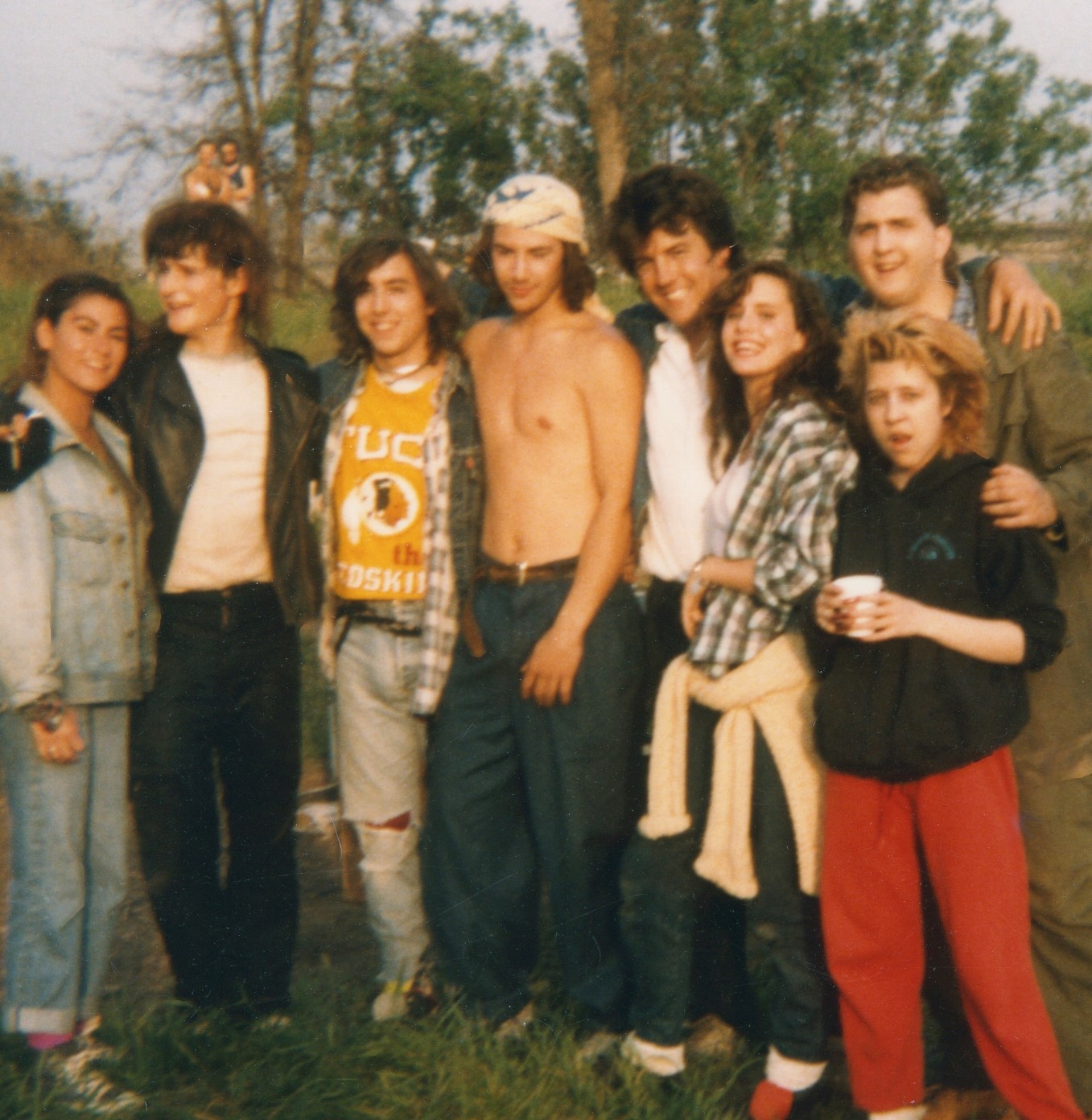
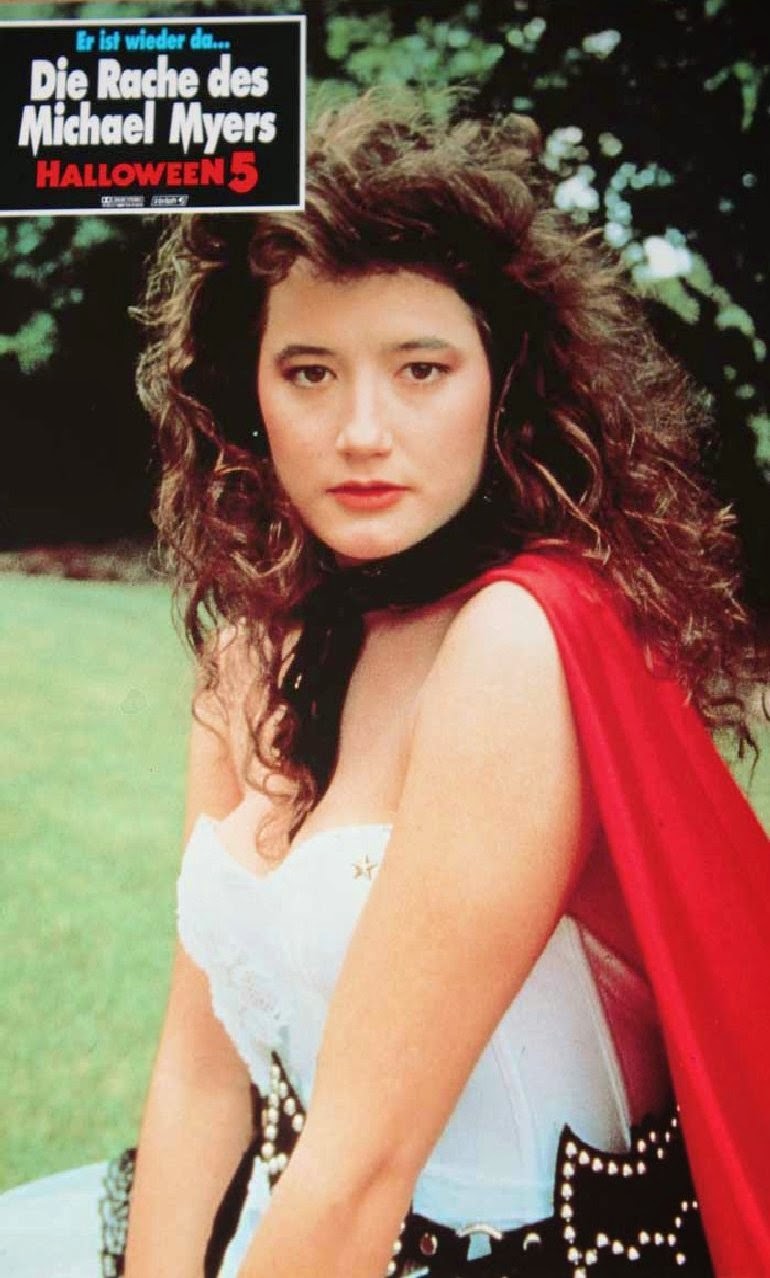
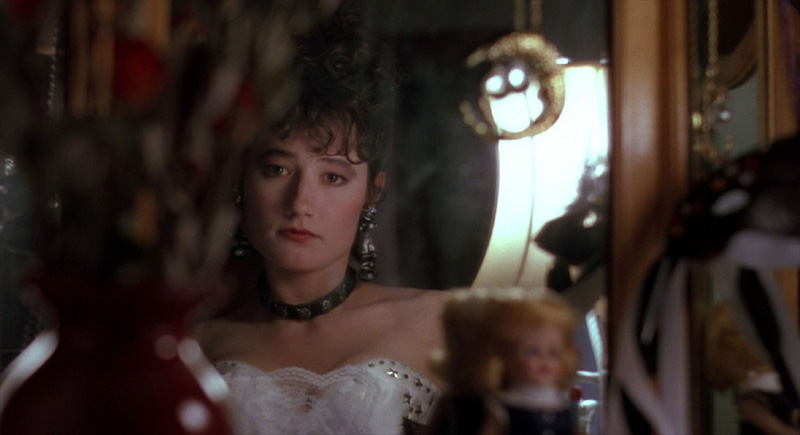
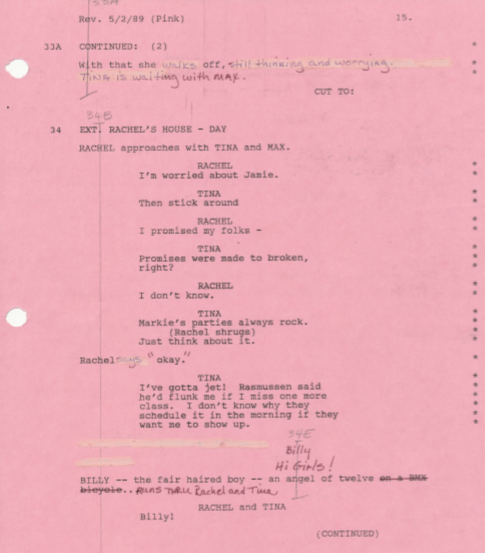
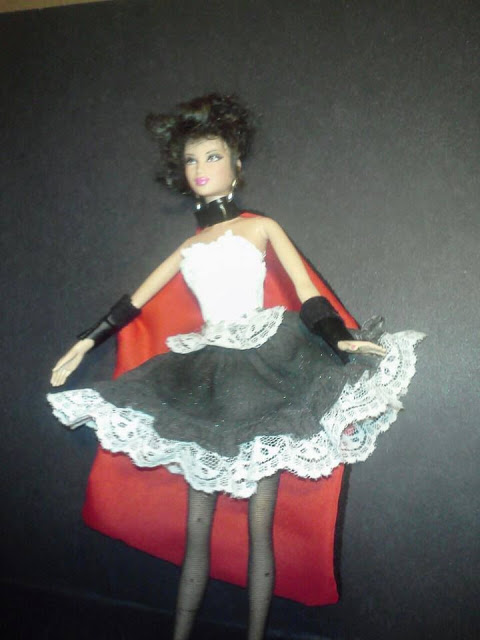
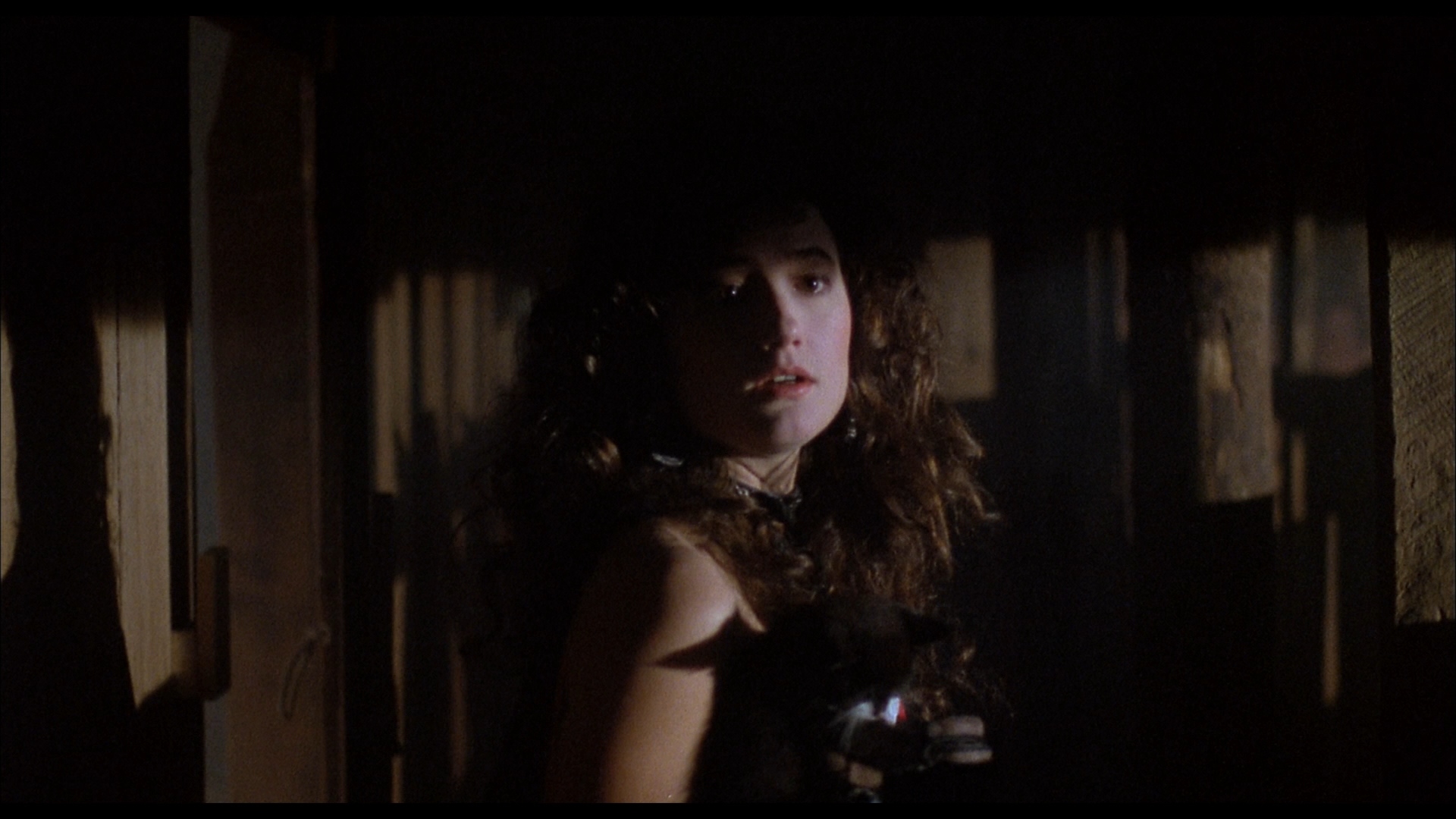 Wendy Kaplan as ‘Tina Williams’ in Halloween 5: The Revenge of Michael Myers
Wendy Kaplan as ‘Tina Williams’ in Halloween 5: The Revenge of Michael Myers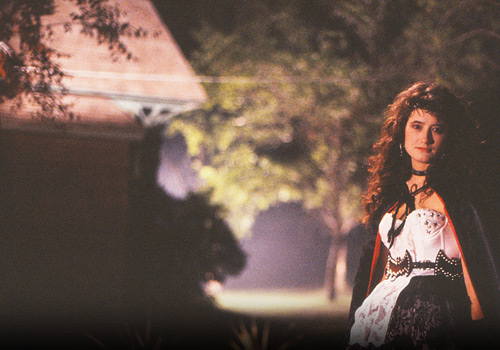 Wendy Kaplan in Halloween 5: The Revenge of Michael Myers
Wendy Kaplan in Halloween 5: The Revenge of Michael Myers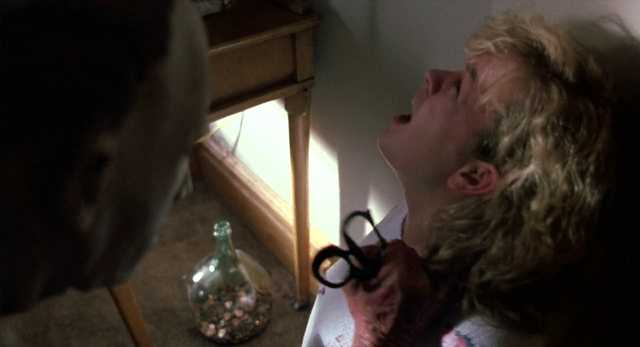 Don Shanks & Ellie Cornell in Halloween 5: The Revenge of Michael Myers
Don Shanks & Ellie Cornell in Halloween 5: The Revenge of Michael Myers Don Shanks & Wendy Kaplan in Halloween 5: The Revenge of Michael Myers
Don Shanks & Wendy Kaplan in Halloween 5: The Revenge of Michael Myers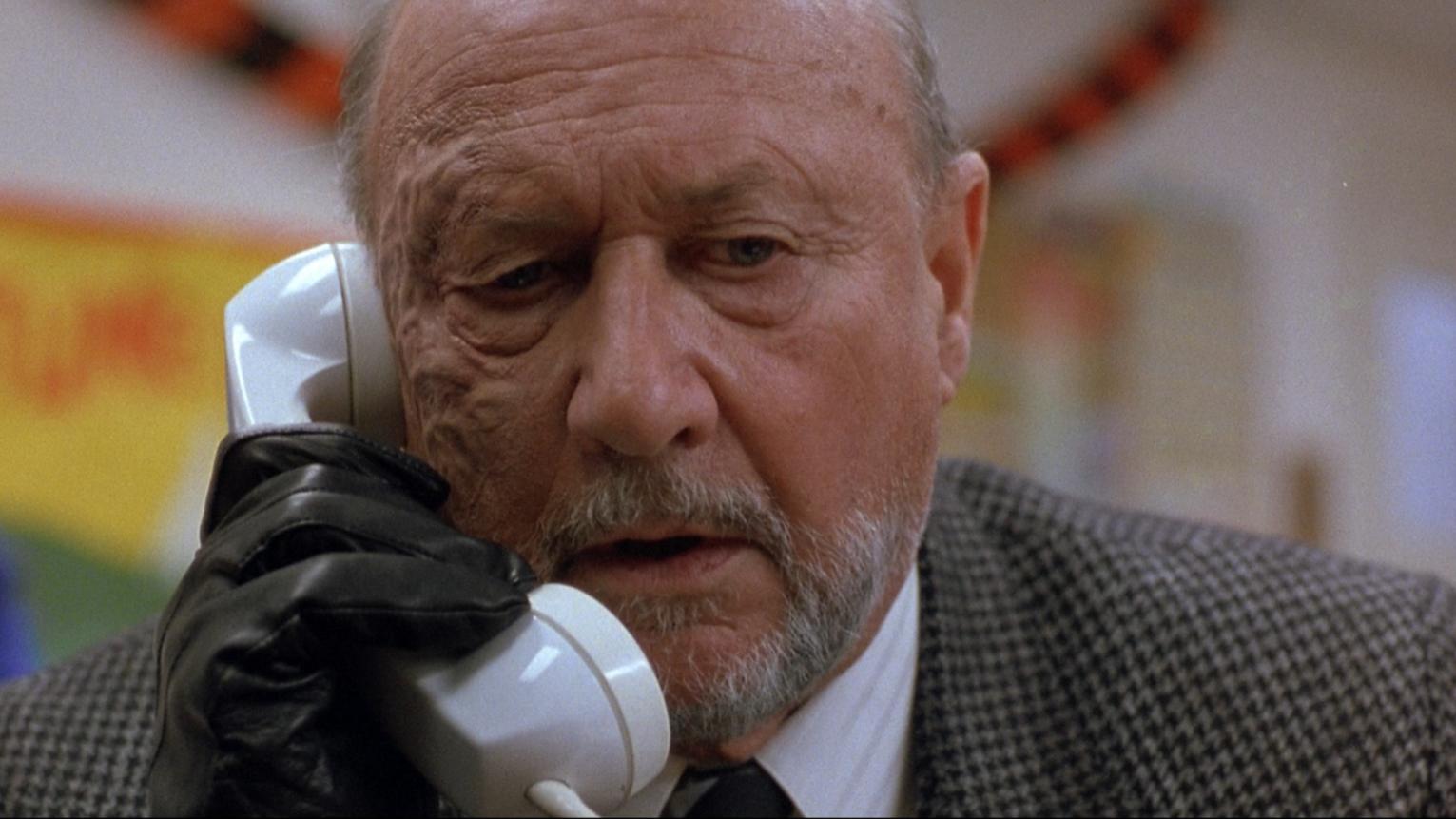 Donald Pleasence as ‘Sam Loomis’ in Halloween 5: The Revenge of Michael Myers
Donald Pleasence as ‘Sam Loomis’ in Halloween 5: The Revenge of Michael Myers